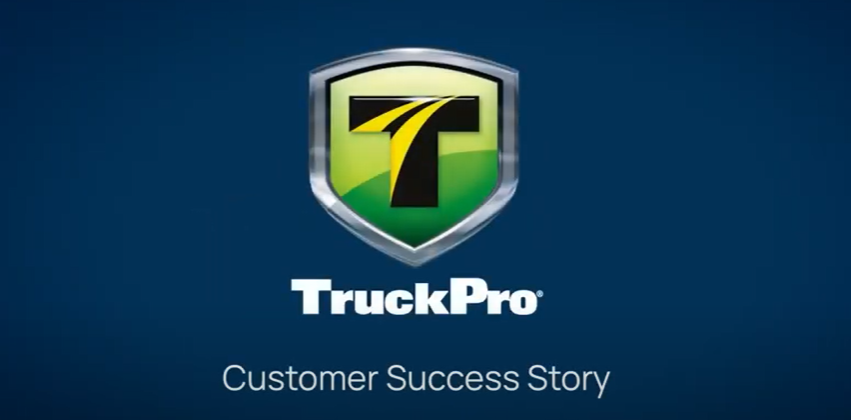Vendor Rebates
What Are Vendor Rebates?
Vendor rebates are financial incentives provided by suppliers to their business customers as rewards for reaching specific purchasing targets or complying with agreed-upon terms. These agreements, which are established between the vendor and the purchaser, state that once certain conditions are met—such as volume thresholds, sales goals, or other performance metrics—a payment, discount, or other form of incentive will be delivered.
Vendor rebates serve a number of purposes, with an underlying focus of encourage customer loyalty and motivating purchase orders by offering a tangible return on substantial purchases. These agreements drive higher sales volumes and strategically enhance partnerships between vendors and their B2B clients. In turn, vendor rebates not only drive increased transactional activity but also foster collaborative growth opportunities within industry relationships.
Well crafted rebate programs leverage advanced channel management software to streamline these complex agreements efficiently. By ensuring precise tracking and timely fulfillment of rebate conditions, both parties in the transaction can optimize their financial outcomes while maintaining clear communication channels regarding the status of earned incentives.
Importance of Vendor Rebates in Business Operations
Vendor rebates play a pivotal role in shaping business operations by directly influencing purchasing behavior. Unlike upfront promotions or incentives, which rely on the anticipation of a desired outcome, vendor rebates reward actual purchasing decisions after they occur. This post-performance rebate reward structure ensures that businesses are incentivized to meet specific objectives before receiving their benefits.
As the backbone behind these initiatives, the implementation of rebate best practices and strategic programs can significantly impact demand forecasting and inventory management within an organization. By offering rebates based on volume purchases or growth targets, vendors encourage buyers to optimize their procurement strategies accordingly. This not only leads to increased sales for suppliers but also allows purchasing companies to leverage cost savings and improve their bottom line.
The level of precision inherent in rebate agreements ensures accountability and performance measurement. Businesses cannot simply hope for targeted results. Rather, they must demonstrate tangible changes in buying patterns or other agreed-upon actions to qualify for these financial rewards. As such, vendor rebates act as powerful motivators that align the interests of both parties toward common commercial goals.
Types of Vendor Rebates
Vendor rebates come in various forms, each designed to meet different strategic objectives within business collaborations, channel pricing strategies, and economic climates. Below are some of the most common types of vendor rebates and the nuances of each.
Percentage Rebates
Percentage rebates offer buyers a set percentage return of the total purchase value. This model encourages larger orders as the rebate value increases proportionally with the expenditure, motivating buyers to reach higher spending thresholds for greater rewards. Such incentives can be particularly persuasive during times when vendors seek to boost sales or reduce inventory levels.
This form of rebate also allows for simplicity and predictability in financial planning for both parties involved. Buyers can anticipate their savings and incorporate them into budgeting decisions, while vendors benefit from enhanced customer loyalty and potentially increased market share due to attractive cost-saving opportunities presented by this incentive structure.
Purchase Volume Rebates
Purchase volume rebates are a tiered incentive system where the rebate value escalates with the quantity of products purchased. This type of vendor rebate is crafted to encourage bulk buying, offering progressively higher discounts or cash-back rewards as customers reach predefined purchasing milestones.
These rebates serve as a potent tool for inventory management and cost control. Buyers are incentivized to consolidate their orders and increase purchase quantities to maximize savings. Meanwhile, vendors benefit from predictable sales volumes and enhanced cash flow stability due to larger, consolidated orders—a win-win scenario underpinned by strategic spending thresholds that drive mutual growth.
Growth Bonus Rebates
Growth bonus rebates are structured to reward customers for surpassing previous purchase volumes or expenditures within a specified timeframe. This type of rebate is designed to incentivize incremental sales growth, effectively encouraging buyers to not only continue their business with a vendor but also to increase it.
These rebates involve setting a baseline—often derived from historical purchasing data—and then offering an additional bonus when the customer’s current purchases exceed that benchmark. Growth bonus rebates can be particularly beneficial in competitive markets where maintaining and increasing market share is paramount.
Variable Incentive Rebates
Variable incentive rebates are dynamic and powerful tools for driving sales, as they offer an increasing value of incentives that scale with the volume or value of purchases. This approach provides a compelling reason for customers to not only maintain their buying levels but also to strive for higher purchase amounts to reap greater rewards.
Such rebates are particularly potent because they create a strong alignment between the vendor’s desire to sell more and the buyer’s interest in obtaining better discounts or larger rebates. As customers reach certain thresholds, the rebate rate escalates, often resulting in significant savings that can be reinvested into their business operations. For vendors, this model helps secure customer loyalty while simultaneously boosting revenue growth through incentivized purchasing behaviors.
Future Purchase Incentives
Future purchase incentives are designed to ensure ongoing business by offering rebates that customers can apply toward subsequent purchases. This rebate type not only rewards current buying activity but also strategically secures future sales, creating a cycle of repeat business and customer retention.
The concept hinges on providing a discount or credit that buyers can redeem in their upcoming transactions. It’s an effective method for encouraging long-term commitment from customers, as the promise of future savings incentivizes them to continue choosing the same vendor. For businesses aiming to build lasting relationships with their clientele, these rebates offer both immediate gratification and sustained value over time.
Elements of Vendor Rebate Programs
Vendor rebate programs are a vital component of strategic sales functions, purchasing operations, and channel management ecosystems designed to incentivize certain behaviors from trading partners. There are many working parts involved in vendor rebate programs, but in simple terms, the core elements involve:
- Rebate Provider: The rebate provider, or payer, is the entity that provides the rebate, typically a manufacturer or supplier looking to increase demand for their products. They set forth the criteria under which rebates will be issued and fund the incentive payouts.
- Processor: In some scenarios, there’s an intermediary—often a distributor or processor—that plays a role in managing or processing rebates between payers and payees. This processor may track purchases and ensure compliance with program terms before issuing any rewards.
- Payee: The payee, or recipient of the incentive, is usually the customer who earns rebates by fulfilling specified conditions. The intent here is to reward loyalty or volume purchases that meet predetermined targets laid out by the payer within vendor rebate agreements.
In addition to the roles or parties involved in vendor rebate programs, there are additional components that are often involved. These include:
Supplier Rebates
Supplier rebates involve financial returns offered by suppliers to distributors based on purchase volumes over time. By hitting specific thresholds, businesses can receive discounts retroactively applied against prior purchases — effectively lowering costs post-transactionally rather than at point-of-sale.
Customer Rebates
Conversely, customer rebates are directed toward end-users encouraging them to choose one brand over another through cashback offers or future purchase credits once they have complied with predefined requirements outlined in a promotion agreement.
Target Percentage Increase
This refers to agreed-upon goals set within vendor rebate programs aimed at increasing purchase quantities during a particular period compared with previous periods. Achievement often triggers higher tiered rebated rates for incremental increases beyond base expectations; thus stimulating additional purchasing behavior above standard levels.
Purchase Price and Volume Requirements
To qualify for many types of rebated offers, participants must adhere not only to volume commitments but also sometimes minimum spend thresholds related directly back to unit pricing structures established contractually upfront.
Managing Vendor Rebate Programs
Efficient management of vendor rebate programs is essential for maximizing the potential benefits and minimizing disputes or compliance issues. Here’s how using a specialized software solution can streamline this complex process.
Rebate management software serves as the backbone for administering intricate rebate programs effectively. It automates tracking, calculations, and reporting—reducing manual effort and mitigating errors that can arise from managing multiple variables in these agreements. By centralizing data, it provides a singular view into all aspects of your rebates program, ensuring nothing falls through the cracks.
Key Features and Benefits of Using a Software Solution
Automation: Automates tedious tasks such as data entry and calculation to prevent human error.
- Visibility: Offers real-time insights into performance against targets, highlighting opportunities close to threshold achievements that might otherwise be overlooked without robust monitoring capabilities.
- Dispute Resolution: Maintains detailed records required for resolving disagreements over payouts with clarity on terms met based on objective evidence rather than subjective recollection.
- Compliance Management: Ensures adherence to internal policies and external regulations by controlling approval workflows thus maintaining an audit-ready posture at all times.
- Legal Safeguarding: Helps reduce legal liability by documenting adherence to contract terms throughout each step within approval chains which could prove invaluable should contractual obligations come under scrutiny or challenge later down the line.
Using rebate management software not only simplifies operations but also equips businesses with powerful tools necessary for capturing every possible saving opportunity while safeguarding against common pitfalls associated with manual oversight within vendor rebate programs‘ lifecycles.
The result? Enhanced operational efficiency coupled with maximized financial returns—all thanks to sophisticated technology solutions tailored specifically towards navigating complexities inherent within B2B incentive management and vendor rebate strategies.
Vendor Rebate FAQs
Are vendor rebates taxable?
Vendor rebates are generally not taxable. Rebate incentives received directly from the manufacturer or wholesaler are not subject to tax. While these vendor rebates are devoid of taxation, the IRS may consider other rebates, points, or rewards as taxable income, especially if they are received from a third party and are not directly tied to the initial sale.
To recap, manufacturer and vendor rebates are not taxable. However, rebates issued by a person other than the vendor (or ’nonseller‘) may not be excluded from gross income. The taxability of rebates often depends on the specific circumstances of the rebate and the nature of the transaction.
Are there risks to vendor rebates?
Vendor rebates–while impactful for improving profit margins, market share, and business relationships–come with their own set of risks and challenges:
- Complexity in Management: Vendor rebates can be complex to manage, especially without the aid of automated software platforms. This complexity arises from the need to track sales against rebate agreements accurately and ensure that rebates are claimed and processed correctly.
- Communication and Aligned Focus: With vendor rebates, the focus is often on scaling. However, many businesses over-rely on certain rebates and may be limited by the complex, manual nature of their rebate processes. They may objectively know that rebates are better than standard promotions for improving customer behavior but they don’t understand how to communicate that value internally.
- Compliance Risk: There is a compliance risk associated with vendor rebates, particularly in how they are accounted for. Rebates can affect the depreciation schedule of assets and must be recognized as income under certain conditions, which can complicate financial reporting and compliance with accounting standards.
- Audit Concerns and Financial Effects: Incorrect rebate accounting can negatively impact a business’s balance sheet and raise audit concerns. This can lead to negative financial effects if not managed properly.
- Tax and Customs Risks in International Trade: In the context of international trade, vendor rebates can be mistakenly regarded as indirect payments or concealing the true transaction value, which can raise red flags with regulators and potentially involve customs or tax-related complications.
- Human Dependence: Rebate management can rely heavily on manual processes and key personnel. Not only is this resource-intensive but it introduces risks related to human error.
Vendor rebates offer strategic advantages, but they also come with varying degrees of risk. Automating rebate management processes can mitigate these risks but requires investment in appropriate software solutions.



